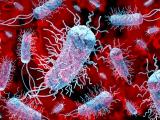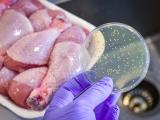Jan 11, 2013
Almost 80% of produce farms to be exempt from new rule
About 79% of produce growers will be exempt from the just-released Food and Drug Administration (FDA) produce safety rule because they grow products that are rarely eaten raw, make under $25,000 a year, or qualify for a small-farm exemption, Food Safety News (FSN) reported today. According to FDA data, 149,561 of 190,111 domestic farms would not be covered by the new rule, which mandates preventive practices across the food industry for the first time, in compliance with the 2011 FDA Food Safety Modernization Act (FSMA). The exemptions stem in part from the Tester amendment to the FSMA, which exempts small farms that sell mostly locally. The FDA estimates that only 40,211 produce farms (and 285 of 475 sprout farms) would have to implement the entirety of the new rule. These farms likely grow about 85% of the produce responsible for foodborne illnesses, FSN reported. Produce Marketing Association lobbyist Tom O'Brien said he thinks
the exemptions will become more controversial as the public realizes how extensive they are.
Jan 11 FSN story
Danish outbreak involved rare E coli subtype, high HUS prevalence
In what the authors say is the first foodborne outbreak of highly virulent verocytotoxin-producing Escherichia coli (VTEC) O157:H7 in Denmark, researchers describe 13 cases, 8 of which involved hemolytic uremic syndrome (HUS), from a rare subtype. Writing in Eurosurveillance yesterday, the researchers said the 13 case-patients from the fall 2012 outbreak were from nine families, and a trace-back investigation revealed ground beef to be the likely source. Eleven patients had symptoms; the two asymptomatic cases were identified through testing of family members. The outbreak strain had a rare toxin gene subtype profile—eae, vtx1a and vtx2a—the authors note, and the high proportion of HUS, a serious kidney complication, is typical of the subtype. The authors conclude, "Based on the findings of this outbreak we suggest performing toxin subtyping in similar outbreak situations in order to quickly
identify high risk VTEC strains and thereby aid risk assessment of the outbreak."
Jan 10 Eurosurveillance report

















